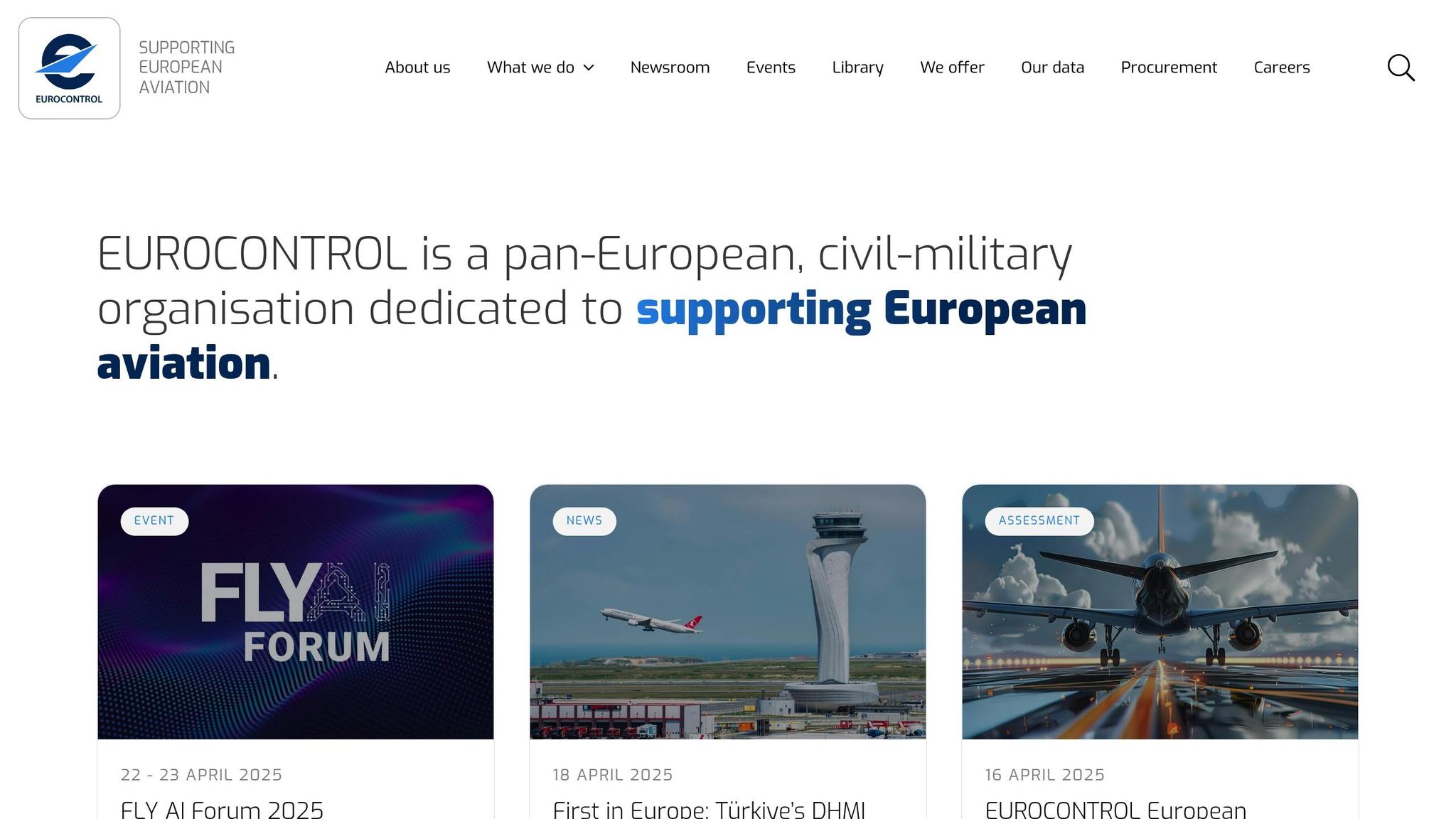Airports in the UK are tackling noise issues while keeping flights efficient and on time. Advanced algorithms now balance noise reduction, fuel savings, and travel schedules to optimise flight paths. Here’s what you need to know:
- Key Goals: Reduce noise near communities, cut fuel usage, and maintain punctuality.
- How It Works: Tools like genetic algorithms and machine learning analyse thousands of routes to find the best options.
- UK Trials: Heathrow and Gatwick have seen success in reducing noise and improving efficiency using these methods.
This approach combines smarter flight planning with ground-based solutions like soundproofing to create quieter skies. Keep reading for a deeper look at methods, results, and how UK airports are applying these strategies.
EUROCONTROL Stakeholder Forum on noise-related …

Multi-Objective Flight Path Basics
Modern optimisation algorithms use Pareto-optimal trade-off analysis to create flight routes that balance key factors like noise levels around UK airports, fuel use, and flight times. This structured method helps aviation planners meet goals while staying within airspace rules.
Main Flight Path Goals
- Lower noise impact on communities by carefully selecting routes and timings
- Cut fuel use with efficient altitude and speed settings
- Keep flights on schedule by managing travel times
- Follow airspace regulations and maintain safety standards
Balancing Competing Priorities
These advanced algorithms produce sets of solutions that show the trade-offs between different goals. Planners can use these insights to find routes that strike a good balance between reducing noise, improving fuel efficiency, and staying on time. These principles set the stage for the research methods discussed in the following section.
Research Methods for Flight Paths
Analysts use specialised methods to balance the trade-offs between noise restrictions, fuel efficiency, and airspace rules.
Current Methods for Optimising Flight Paths
Researchers use tools like genetic algorithms and multi-objective linear programming to find the best flight routes. These methods analyse thousands of potential paths while considering multiple constraints at the same time. Machine learning also plays a role by improving these solutions using historical flight data and performance trends.
Noise and Airspace Regulations
Airports in the UK follow strict noise rules aimed at protecting residential areas, especially during the night. Guidelines from the Civil Aviation Authority (CAA) set specific approach and departure paths, including mandatory noise-preferential routes at major airports like Heathrow and Gatwick. Additional rules, such as height limits and time-based noise controls, further influence how flight paths are planned.
Algorithms for Path Planning
Dynamic programming algorithms simplify the process by breaking complex routes into smaller, manageable segments. Modern systems also use real-time weather updates and airspace congestion data to make adjustments on the go. These algorithms focus on routes that minimise noise during sensitive times while still meeting fuel efficiency goals.
These techniques underpin the comparisons of noise and fuel performance discussed in the next section.
sbb-itb-06ab728
Latest Research Results
Recent studies have evaluated optimisation methods based on their impact on noise reduction and fuel efficiency, offering insights into their performance.
Method Comparison
- Genetic Algorithms: These achieve moderate noise reduction but require significant computing resources.
- Dynamic Programming: Focuses on improving fuel efficiency while maintaining a manageable level of complexity.
- Hybrid Methods: Combine elements of both approaches, achieving a balance between noise reduction and fuel savings, though they add more complexity to the system.
- Machine Learning Frameworks: Adjust routes in real time, responding to changing conditions dynamically.
Noise and Fuel Results
Trials conducted at UK airports show noticeable improvements in both community noise levels and fuel consumption. Night-time routes, in particular, have reduced noise exposure while enhancing punctuality. These findings point towards the future of flight planning, which emphasises real-time route adjustments and closer coordination with air traffic management systems.
UK Airport Applications
UK airports are now putting the latest research into route optimisation into action. By using advanced algorithms, they are applying multi-objective flight path planning to balance noise control with operational efficiency.
Airport Noise Control
London Heathrow has rolled out optimised departure routes designed to reduce noise over residential areas while maintaining flight capacity. These routes use hybrid methods to achieve this balance. Meanwhile, Manchester Airport has tested machine learning-based path planning. This approach has shown improvements in reducing noise exposure for nearby communities and keeping flights on schedule. In addition to optimised flight paths, ground-based measures like acoustic systems further help to minimise noise.
Sound Treatment Options
Sound of Silence offers solutions like sound mapping, customised building treatments, and real-time noise monitoring to aid airports in managing noise. At Birmingham Airport, these measures are part of a broader community protection plan. This includes installing acoustic barriers along busy routes, sound masking in public spaces, and specialised window treatments for buildings under flight paths.
Conclusion
Key Takeaways
- Balancing Goals: Multi-objective optimisation helps airports maintain operational efficiency while reducing noise impact.
- UK Airport Trials: Early trials in the UK show that optimised flight paths can reduce noise levels in surrounding areas without compromising efficiency.
- Combined Solutions: Pairing flight path optimisation with soundproofing measures offers a strong strategy for managing airport noise.
These trials and data-driven methods present a scalable approach to addressing noise challenges in aviation.

